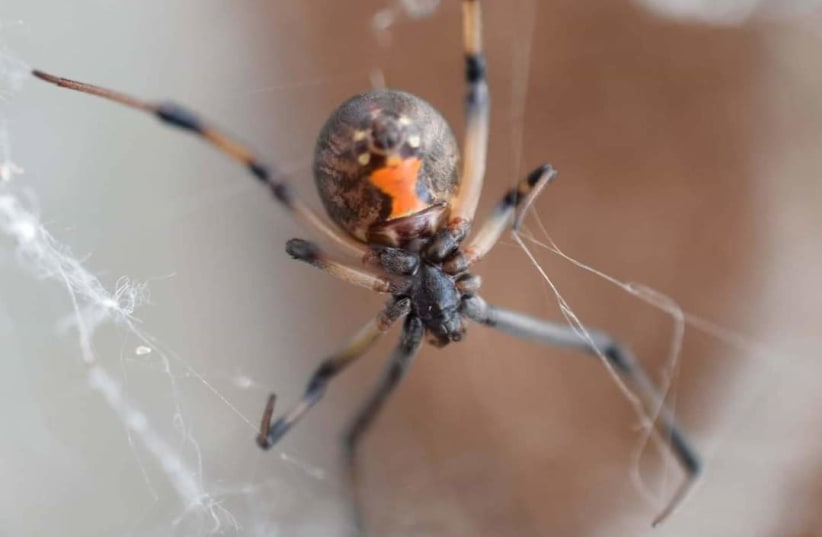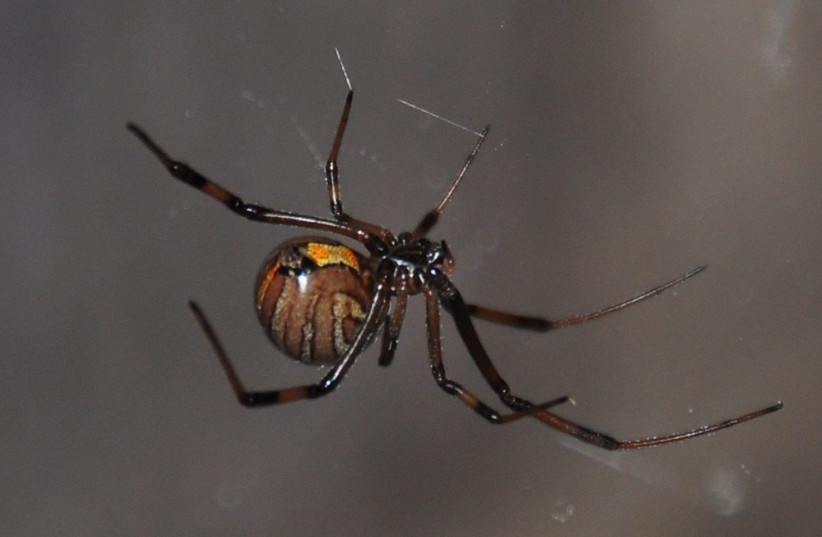The infamous black widow spiders are on the decline, and a new study suggests this may due to aggressive efforts by brown widow spiders to hunt them down.
The findings of this study were published in the peer-reviewed academic journal Annals of the Entomological Society of America.
The study sheds light on a web of confusion regarding the decline of one of the most infamous types of spiders – and what could be causing it.
Dangerous wall crawlers: What are black widow spiders?
Black widow spiders are a species of spider within the genus Latrodectus, also known as "true widows."
These spiders are relatively small, though they vary in size, and are known for two defining characteristics: Their dark color and the reddish marking often in the shape of an hourglass.
The name "widow" comes from the tendency in these spiders to partake in sexual cannibalism, meaning after mating the female spider devours the male. Likewise, it is really only the female widow spiders that pose any possible danger to humans. This is because the spider's bite will be accompanied by a dose of latrotoxin, a type of neurotoxin that can cause pain, swelling, vomiting and muscle rigidity as part of a condition known as latrodectism.
Treatment is often needed for this condition, and without it the symptoms could last several weeks. However, despite many fears within the popular culture about black widow spiders, the bites are rarely fatal and tend to be dangerous only to the elderly, very young children, pregnant people and those with some preexisting conditions.
Not only that, but black widows rarely bite humans anyway, since they are known to be naturally non-aggressive towards people.
But either way, as spiders, they still play important roles in ecosystems and are located all over the world – including in Israel.
However, in some places, such as the US, their numbers have been on the decline.
Why have black widow numbers gone down? Enter: The brown widow
The problem that seems to be facing black widow populations in parts of the US is the arrival of its close relative, the invasive species known as the brown widow.
Though obviously different in color, possessing a brownish color and an orange-yellow hourglass-like mark, brown widows are still close cousins of black widows, being another species of spider within the Latrodectus genus.
These spiders are also found worldwide, though are believed to have originated in South America or South Africa.
But how did they spread?
It is possible that they were brought to other ecosystems accidentally, possibly by unknowingly hitching a ride on a cargo ship.
This isn't unprecedented and many other invasive species have spread in a similar manner.
Due to the influx of a new player in the ecosystem, it is steadily pushing into the niche currently occupied by other species, slowly working its way into becoming the dominant species in the niche.
This makes sense, with the brown widows likely outcompeting the black widows for food and territory.
Except, that may not be the only thing at play here. After all, the ecosystem in Florida, where this is partially occurring, should have enough food to not cause serious issues for the two spider populations, and there is less dying of starvation than by predation.
The researchers behind the study, who come from the University of South Florida (USF), found evidence revealing something else: The brown widows aren't just competing with black widows, but outright hunting them down and killing them.
So how did they test this?
To figure it out, the researchers put brown widows in observable habitat conditions alongside other species filling the niche of cobweb spiders.
When they did this, they found that the brown widows prioritized hunting down and killing black widows 6.6 times more than other species.
When brown widows were placed with red house spiders, it had a 50% chance of either cohabiting or of the red house spiders consuming the brown widows. With triangulate cobweb spiders, brown widows cohabitated 80% of the time and were killed in just a few cases.
With black widows, however, this was flipped: Brown widows killed and ate them 80% of the time.
These were for younger spiders. When testing with fully-grown adults, brown widows killed black widows 40% of the time while black widows killed brown widows defensively 30% of the time.
This is rather surprising due to how different the brown and black widows act. The black widow spiders tend to be far less aggressive and tend to avoid confrontation. Brown widows, however, tend to be the opposite. In fact, they were shown aggressively storming into black widow webs to attack.
Not only that, but brown widows also breed much faster, putting even greater pressure on their black widow rivals.
Overall, it seems that brown widows may just be more tolerant towards spiders that aren't part of the Lactrodectus genus, and black widows don't have that luxury.
How worried should humans be about this invasive new spider species?
It turns out, this could even be seen by some as a good thing.
While black widow venom does affect humans and even has a small chance of being deadly, brown widows are much less of a problem. This is because they aren't able of injecting the same amount of toxin with its bites, so the bites are therefore far less toxic and far less of a problem than black widows.
So maybe brown widows can be beneficial for us in the long run.

